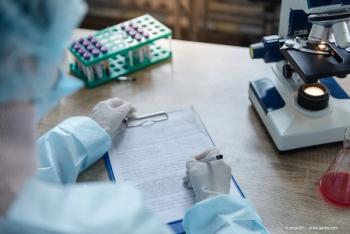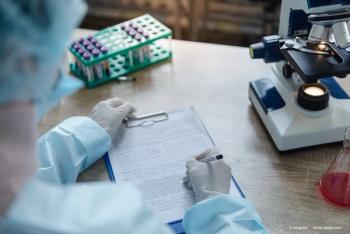
Eyestem completes phase 1 study of Eyecyte-RPE in patients with geographic atrophy
The trial treated 9 patients in 3 sequential, ascending dose-level (DL) cohorts.
Eyestem has announced the completion of its phase 1 study for its investigational retinal pigment epithelium (RPE) cell therapy, Eyecyte-RPE. The company has submitted the results to the Central Drugs Standard Control Organisation (CDSCO), India's national regulatory body for cosmetics, pharmaceuticals, and medical devices, for permission to start phase 2 of the study.
The trial was designed to evaluate the safety and efficacy of Eyecyte-RPE in patients with
Rajani Battu, PhD, CMO at Eyestem, commented on the trial results, saying,1 “Our phase 1/2a trial demonstrated an excellent safety profile with no serious adverse events while delivering clinically meaningful vision improvement—an average of 15.8 letters in the first 6 patients over 6 months. These encouraging results position us to advance this important therapy, and we are ready to initiate phase 2 immediately upon receiving CDSCO approval.”
The trial treated 9 patients in 3 sequential, ascending dose-level (DL) cohorts. The 3 DLs were Eyecyte-RPE at 100,000, 200,000, and 300,000 cells. Eyecyte-RPE is a suspension of human induced pluripotent stem cell (hiPSC)–derived retinal pigment epithelial (RPE) cells.2
Jogin Desai, founder of Eyestem,
Desai noted that “[the company has] seen structural changes that are starting at around the 3-month cycle and then go all over the 6-month [cycle].” Desai went on to state, “One of the patients, who is our star patient, has actually started working again because he [originally] could not see the scales in a weighing machine. The patients will say, ‘now I can see letters, now I can see faces that I could not see before.’ Patient can see wall clocks. So there's a significant difference in the quality of life of patients, especially patients where the other eye is also bad, and so we're hopeful that that will continue to make a difference.”3
The company states that planning for a US leg of the trial is underway and is targeted for the first half of 2026.
References:
Eyestem announces completion of phase 1 of its RPE cell therapy with promising efficacy and safety outcomes. Published June 18, 2025. Accessed June 18, 2025.
https://menews247.com/eyestem-announces-completion-of-phase-one-of-its-rpe-cell-therapy-with-promising-efficacy-and-safety-outcomes/ Harp MD. Eyestem releases positive results from phase 1 trial in patients with geographic atrophy. Published April 14, 2025. Accessed June 18, 2025.
https://www.ophthalmologytimes.com/view/eyestem-releases-positive-results-from-phase-1-trial-in-patients-with-geographic-atrophy Harp MD. Hayes H. ARVO 2025: Dr. Jogin Desai provides Phase 2 updates from a first-in-human RPE cell suspension trial. Published May 6, 2025. Accessed June 18, 2025.
https://www.ophthalmologytimes.com/view/arvo-2025-dr-jogin-desai-provides-phase-2-updates-on-a-first-in-human-rpe-cell-suspension-trial
Newsletter
Keep your retina practice on the forefront—subscribe for expert analysis and emerging trends in retinal disease management.











































